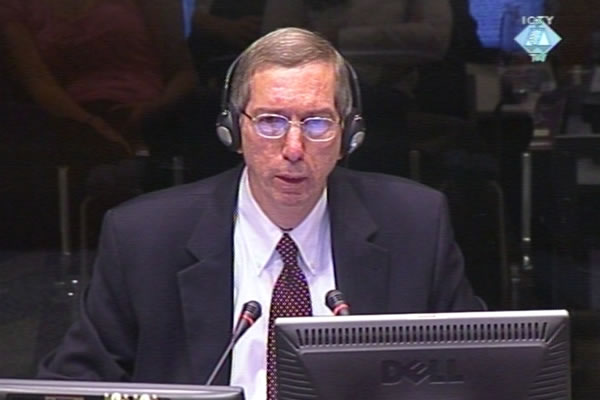Home
US MILITARY ATTACHE IN GOTOVINA'S DEFENSE
Former US military attaché to Croatia Richard Herrick claims that he was ‘impressed’ by General Ante Gotovina’s military acumen; in his view Operation Storm was aimed at reclaiming the occupied territories and not at expelling the Serb civilians. He admits, though, that he could say nothing about the consequences of the Croatian attack, since he left the office two days before it began
 Richard Herrick, svjedok odbrane Ante Gotovine
Richard Herrick, svjedok odbrane Ante Gotovine During and after Operation Storm in August 1995, Peter Galbraith was the US ambassador to Croatia and Richard Herrick was his military attaché until the start of Operation Storm. Generals Gotovina, Cermak and Markac are on trial for the crimes committed in the course of and after Operation Storm. Galbraith gave evidence for the prosecution in June 2008, stating that the crimes in and after Operation Storm were committed ‘on the orders of or were tacitly approved by the Croatian authorities’. Ante Gotovina’s defense counsel decided to call Richard Herrick as a witness today in part to rebut Galbraith’s claims about the Croatian authorities’ intentions.
In his statement to the defense investigators, Lieutenant Colonel Herrick said that, in his view, Operation Storm was “not aimed at expelling the Serbs; its objective was to reclaim the occupied territory’. Herrick formed this opinion based on his conversations with the Croatian officials, in particular with the defense minister Gojko Susak. The witness added he was ‘impressed’ by General Gotovina's military acumen: as the commander of the Split Military District, Gotovina commanded all the Croatian forces in the attack on Krajina in August 1995.
According to Herrick, the key problem of the Croatian Army was the lack of training among the NCOs, including in the area of law of war. However, the situation improved in that respect, the witness said, after General Gotovina put in some effort. Gotovina told Herrick that he had ordered all his subordinate officers to treat civilians and prisoners of war humanely. Herrick saw for himself that those were not just empty words: in the spring of 1995 he visited the HV units on the Mount Dinara. The man who drove a jeep, a member of the 4th Guards Brigade, said he was proud of the training in law of war he had received. He also boasted that his brigade never committed any crimes.
The prosecutor then asked Herrick in the cross-examination if he really believed that a HV soldier would tell him, a US military attaché, openly that he was a member of a unit that committed a number of crimes. ‘Certainly not’, Herrick replied, adding that he would not expect to be told by this soldier that he was proud because no crimes were committed. The prosecutor then showed him a document drafted by the HZ HB secret service in late 1994: the document says that 4th Guards Brigade troops stole livestock, household appliances, tractors and other valuables as they pulled out from Livno. The witness said the jeep driver had never told him that. Later on, Herrick heard that members of that unit had participated in looting and burning of houses in Glamoc and Bosansko Grahovo. He said he never checked if something like that really occurred.
As Herrick claimed that the use of artillery in the Operation Storm was justified by military necessity and that the objective of the operation was not to expel Serbs, the prosecutor put it to Herrick that he could say nothing about the consequences of the Croatian attack, since he left the office of the military attaché on 2 August 1995, two days before Operation Storm was launched. Herrick agreed, adding that he never actually saw the list of artillery targets in Krajina.
Linked Reports
- Case : Gotovina et al. - "Operation Storm"
- 2009-07-07 CLEARING UP AFTER OPERATION STORM
- 2009-07-03 A THOUSAND QUESTIONS ABOUT A THOUSAND CRIMINAL REPORTS
- 2009-07-02 CROATIAN JUDICIARY AGAINST THE 'STAMPEDE PHENOMENON'
- 2009-07-13 GENERAL TAKING COVER BEHIND A NCO
- 2009-07-17 WHEN LITTLE KIDS PLAY WAR…
- 2009-07-23 GOTOVINA’S MILITARY WITNESS ON ‘ASSUMED FACTS’
